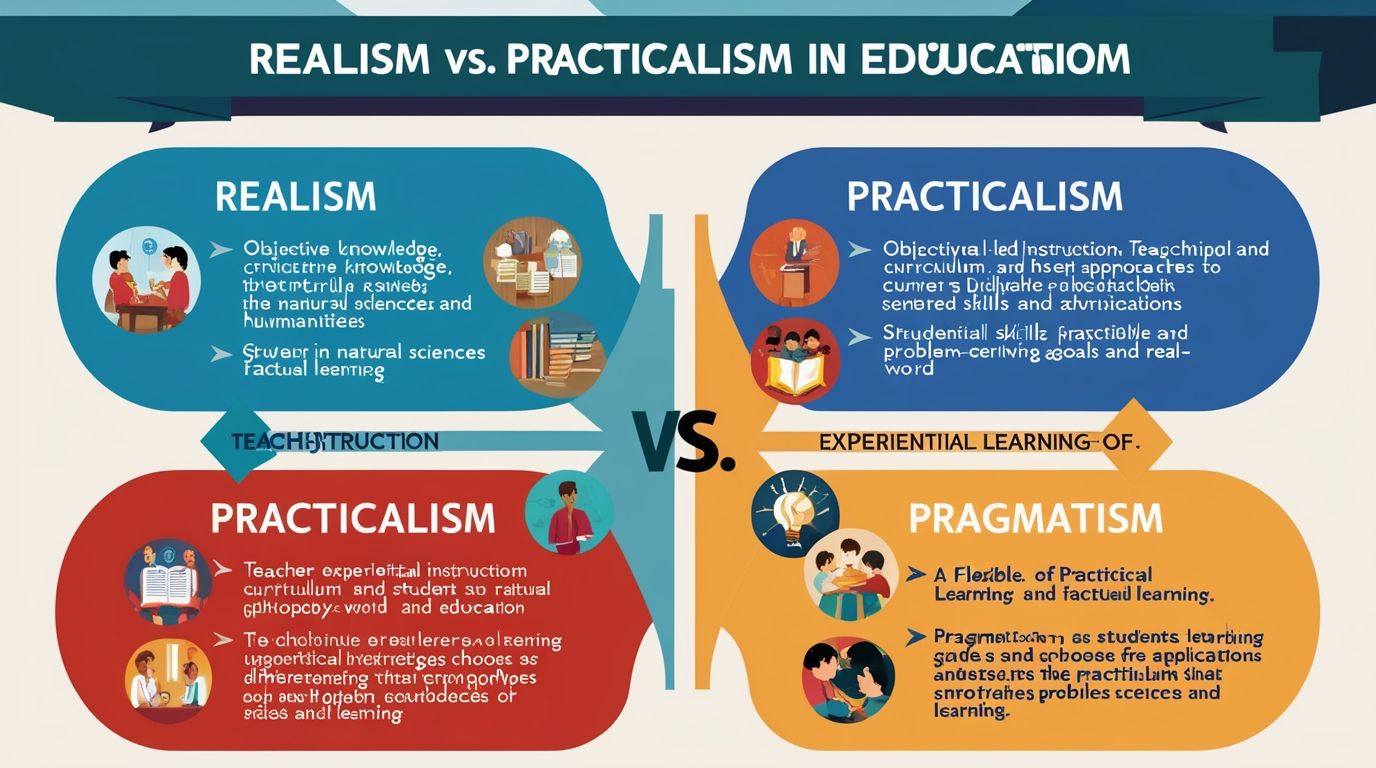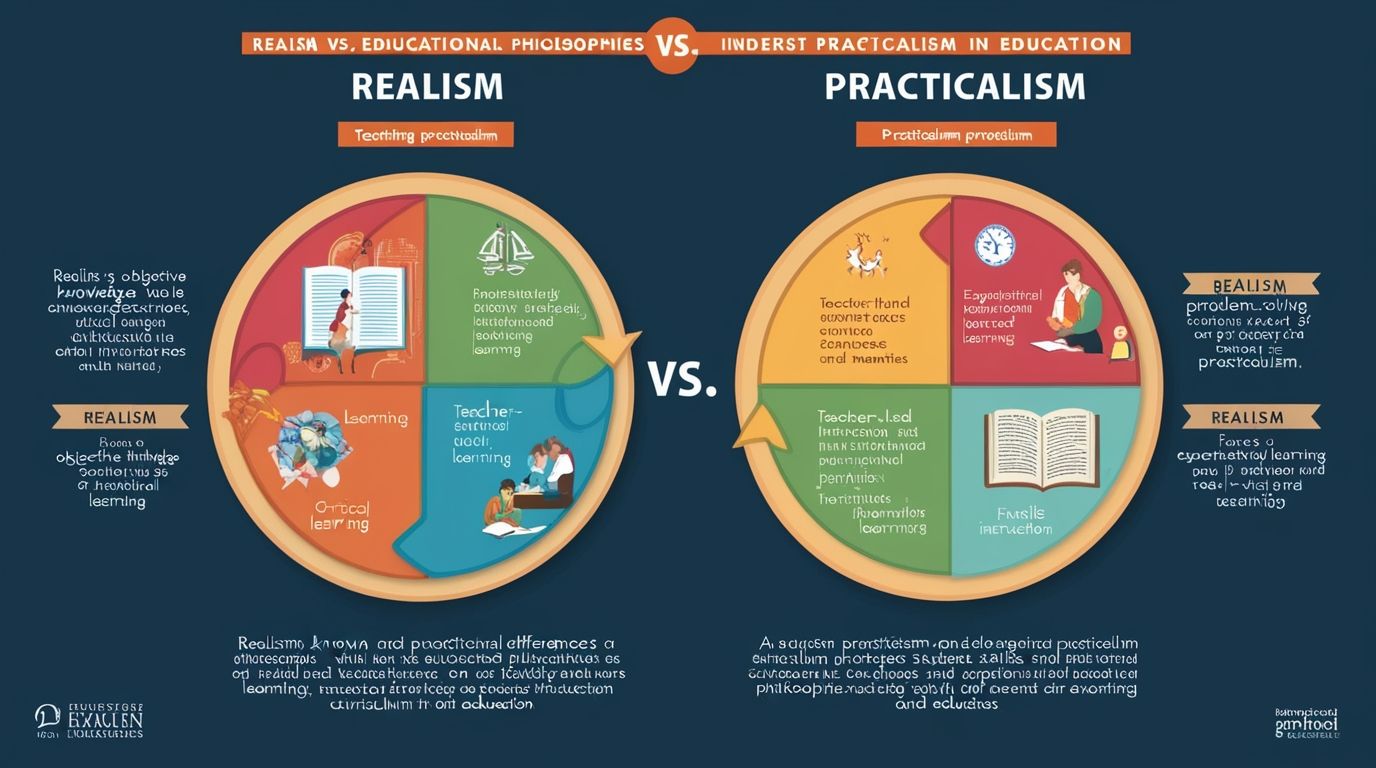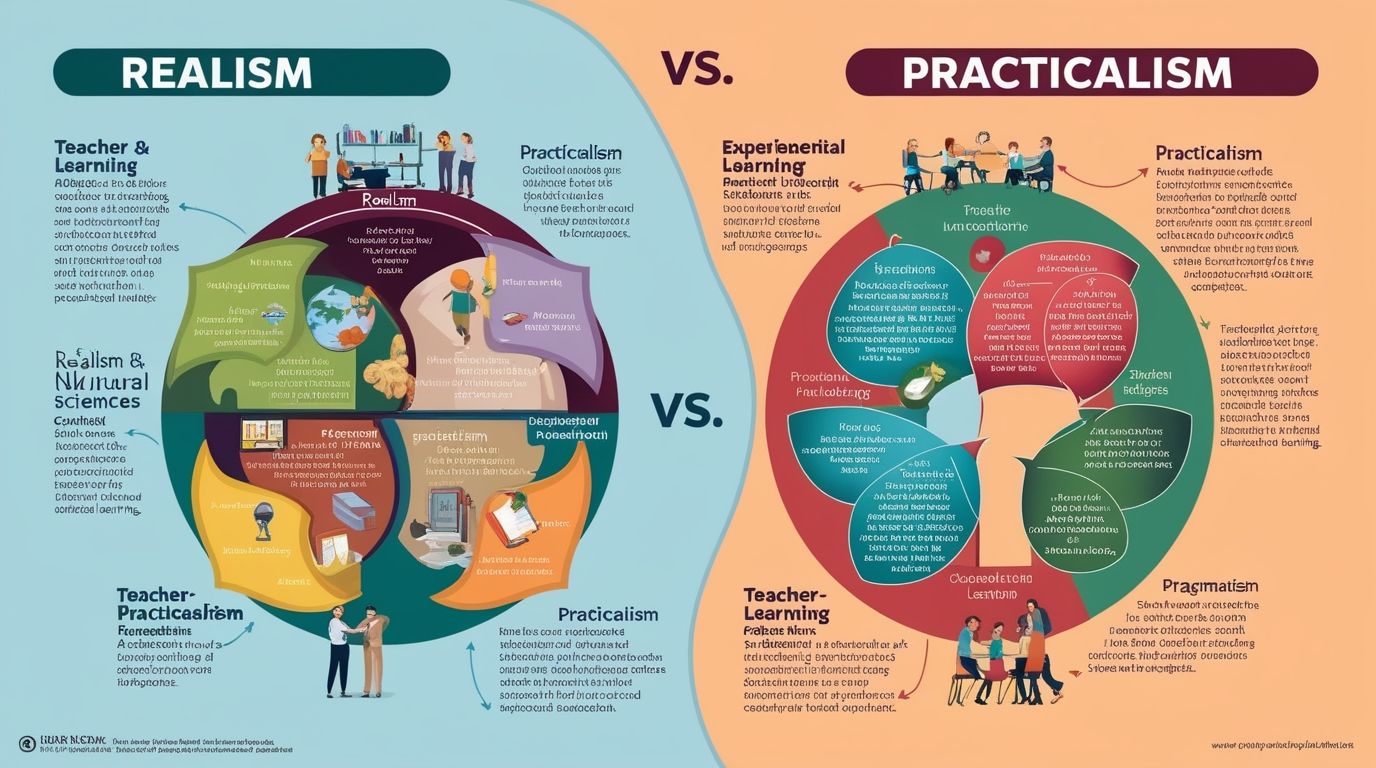Introduction
Realism vs. Practicalism in Education, Education is a dynamic field where philosophies and approaches constantly evolve to meet the needs of learners and society. Two prominent educational philosophies, Realism and Practicalism, offer distinct perspectives on the purpose and methods of education. Realism emphasizes the acquisition of objective knowledge and the understanding of the natural world, while Practicalism focuses on practical skills, problem-solving, and adaptability in real-world situations. This article explores the differences between Realism and Practicalism in education, examining their principles, applications, and implications for teaching and learning.
Realism in Education
This is an educational philosophy rooted in the belief that reality exists independent of human perceptions, and that knowledge of this reality can be acquired through sensory experience and rational thought. Realism advocates for an education that is grounded in the objective study of the natural world and the development of intellectual skills.
- Principles of Realism
- Objective Knowledge: Realists believe that knowledge should be based on observable and measurable facts. Education should focus on subjects like science, mathematics, and history, which provide students with an understanding of the physical world and human experience.
- Emphasis on Content: In Realism, the curriculum is centered around core subjects that reflect the objective world. Teachers are viewed as authorities who impart factual knowledge to students, emphasizing accuracy, discipline, and logical thinking.
- Critical Thinking: Realists value critical thinking and analytical skills, which they believe are essential for students to understand and engage with the world. The goal is to develop a student’s intellectual capacity to discern truth from falsehood.
- Application in Education
- Curriculum Design: Realist education involves a structured curriculum with a strong emphasis on the sciences, mathematics, and humanities. The goal is to provide students with a comprehensive understanding of the world and its workings.
- Teaching Methods: Teachers in a Realist classroom use direct instruction, demonstrations, and experiments to convey knowledge. There is a focus on factual content, logical reasoning, and the scientific method.
- Assessment: Assessment in Realist education is typically objective, using tests and exams that measure students’ understanding of factual knowledge and their ability to apply logical reasoning.
- Implications for Learners
- Realist education prepares students for careers that require strong analytical skills and a deep understanding of objective knowledge, such as science, engineering, and law. It emphasizes discipline, structure, and intellectual rigor.
Practicalism in Education
Practicalism, also known as Pragmatism, is an educational philosophy that prioritizes practical skills, experiential learning, and the ability to solve real-world problems. It is grounded in the belief that knowledge is not static but is constantly evolving through human experience and interaction with the environment.
- Principles of Practicalism
- Experiential Learning: Practicalism emphasizes learning through experience and hands-on activities. It values the process of learning as much as the outcomes, encouraging students to engage with their environment and learn by doing.
- Problem-Solving: Education should equip students with the skills to address real-world challenges. Practicalism promotes critical thinking, creativity, and adaptability, preparing students to navigate a rapidly changing world.
- Relevance to Life: Practicalists believe that education should be relevant to students’ lives and future careers. The curriculum is often interdisciplinary, blending academic knowledge with practical skills.
- Application in Education
- Curriculum Design: Practicalism supports a flexible and adaptive curriculum that integrates academic subjects with practical skills and real-world applications. Project-based learning, internships, and community service are common elements.
- Teaching Methods: Teachers in a Practicalist classroom act as facilitators rather than authoritative sources of knowledge. They guide students through experiential activities, encourage exploration, and support collaborative learning.
- Assessment: Assessment in Practicalist education is formative and often includes portfolios, presentations, and projects. It focuses on the development of skills and the application of knowledge in practical contexts.
- Implications for Learners
- Practicalist education prepares students for a wide range of careers by emphasizing adaptability, problem-solving, and the ability to learn continuously. It fosters a growth mindset and a proactive approach to personal and professional development.

Realism vs. Practicalism: A Comparative Analysis
- Philosophical Differences
- Realism is rooted in the belief that knowledge is objective and can be discovered through observation and rational thought. Practicalism, on the other hand, sees knowledge as fluid, shaped by experience, and constantly evolving.
- Realists prioritize the acquisition of factual knowledge and logical reasoning, while Practicalists emphasize practical skills, experiential learning, and the ability to adapt to new situations.
- Approaches to Teaching and Learning
- Realism focuses on teacher-centered instruction, where teachers impart knowledge through lectures, demonstrations, and direct instruction. The role of the student is to absorb and understand this knowledge.
- Practicalism, in contrast, advocates for a student-centered approach, where learning is driven by the student’s interests, experiences, and engagement with real-world problems. Teachers act as guides and facilitators of learning.
- Curriculum and Assessment
- The Realist curriculum is structured and content-heavy, emphasizing subjects that reflect the objective world. Assessment is primarily objective, measuring factual knowledge and logical reasoning.
- The Practicalist curriculum is flexible and integrated, combining academic knowledge with practical applications. Assessment is formative and holistic, focusing on the development of skills and the application of knowledge in real-world contexts.
- Impact on Student Development
- Realism prepares students for professions that require deep, specialized knowledge and analytical skills. It emphasizes discipline, structure, and intellectual rigor.
- Practicalism prepares students for a broader range of careers by fostering adaptability, creativity, and problem-solving skills. It emphasizes the importance of lifelong learning and the ability to navigate change.

Conclusion
Realism and Practicalism represent two distinct educational philosophies with different approaches to teaching, learning, and the purpose of education. Realism emphasizes the acquisition of objective knowledge and the development of critical thinking skills, preparing students for structured, knowledge-based careers. Practicalism, on the other hand, values experiential learning, practical skills, and adaptability, preparing students for a rapidly changing world where problem-solving and flexibility are key. Both philosophies offer valuable insights and can complement each other in a balanced educational approach that prepares students for the complexities of modern life.
References
- Ornstein, A. C., & Hunkins, F. P. (2016). Curriculum: Foundations, principles, and issues. Pearson.
- Gutek, G. L. (2014). Philosophical, ideological, and theoretical perspectives on education. Pearson.
- Ozmon, H., & Craver, S. (2018). Philosophical foundations of education. Pearson.
- Dewey, J. (1938). Experience and Education. Kappa Delta Pi.
- Tyler, R. W. (2013). Basic principles of curriculum and instruction. University of Chicago Press.
- Waks, L. J. (2013). Philosophy of education: Learning and schooling. Springer.

6 thoughts on “Realism vs. Practicalism in Education”
Comments are closed.